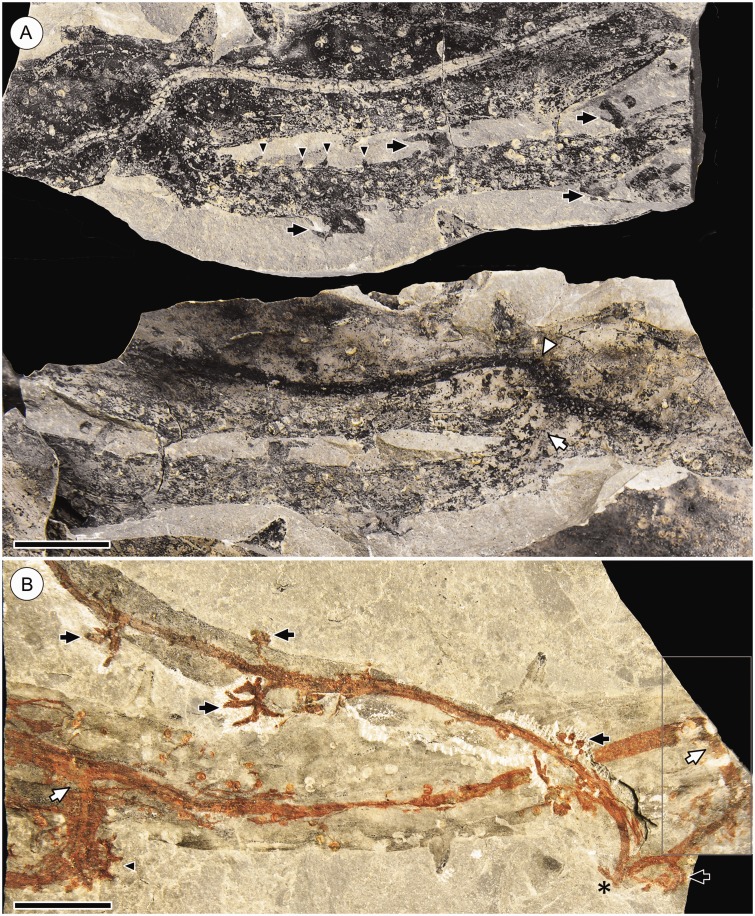Fig. 3.
Root-bearing axes produced by K-branching in the Cottonwood Canyon lycophyte. (A) Part (top) and counterpart (bottom) of specimen showing a leafy stem with a root-bearing axis diverging from it. Note impression of the stele of the root-bearing axis in the counterpart (white arrow) demonstrating continuity between the vasculature of the main stem and root-bearing axis. The root-bearing axis has several reduced leaves at the base (black arrowheads) and four root tufts (black arrows). It is unclear if the other arm of the K-branch is present, but the curvature of the stele in the main stem (white arrowhead) suggests the arm, if developed, may overlap the main stem. Scale bar = 10 mm. HPH 356. (B) Leafy stem with two K-branches (white arrows). The steles of the main stem, K-branches and root traces are oxidized, revealing the details of branching. One K-branch (at left) produces one arm, which is cut off at the edge of the rock specimen, and a leafy bud (black arrowhead). The other K-branch (at right) produces one arm that is cut off at the edge of the rock specimen and a root-bearing axis, which is folded over itself (at asterisk). Five root tufts (black arrows) are present along this root-bearing axis; note that root traces diverge away from the base of the axis, in the direction of its apex (top). Images of the partially preserved portions of the part (D1812a) and counterpart (D1812b) of this specimen have been merged digitally (boxed area, at right) to show continuity between the root-bearing axis and the main stem. Scale bar = 10 mm. KU D1812.

